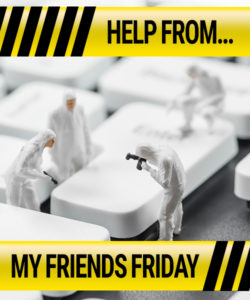 Hello, friends! John E. Stith has been a member of my carpool to Rocky Mountain Mystery Writers of America for years. But while I know John through the mystery community, I believe his real passion lies in science fiction. I mean this man’s imagination is out of this world! Please welcome the award-winning John E. Stith and read on. ~ Donnell
Hello, friends! John E. Stith has been a member of my carpool to Rocky Mountain Mystery Writers of America for years. But while I know John through the mystery community, I believe his real passion lies in science fiction. I mean this man’s imagination is out of this world! Please welcome the award-winning John E. Stith and read on. ~ Donnell
Building a Time Machine Story
By John E. Stith
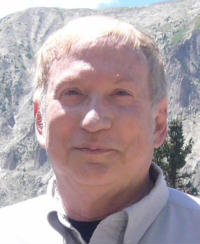
Author John E. Stith
For those who like to compare notes, or to see inside someone else’s thought processes, here’s a peek into story construction for my recent young-adult short novel called TINY TIME MACHINE.
The story’s gimmick is a time machine built into a cell phone. The story owes part of its existence to a phone app that Google bought and eventually incorporated into its own product line. Word Lens, now part of Google Translate, is an augmented reality program that processes camera images to detect words in one language, and then overlays the image with words translated into the preferred language.
But what if the phone wasn’t simply altering what it showed me? What if it was showing what my current location looks like in another time? Then the shutter button could open a portal to that other time.
I had the core [idea] of a time machine. Where did it come from? Big research team, or lone scientist? A lone scientist seemed more intriguing, and maybe the word “lone” helped put me on track for a couple of characters who start out as loners. The lone-scientist notion triggered the phrase “mad scientist,” and I considered ways to spin that into something newer. We often use “mad” as a synonym for “angry,” but the original “mad scientists” were mad in the original sense of being slightly or hugely crazy. But what if I really had an angry scientist on my hands? Then, what would happen to the old notion of a mad scientist’s daughter? In fact, my first choice for a title for this work was “Angry Scientist’s Daughter.”
Some overly angry parents wind up estranged from their children, so the idea of the daughter of an angry scientist morphed into the notion of a young adult woman who distances herself from her father and from others. A loner. Meg.
As I fleshed out Meg and her father and the time machine, I wanted a reason for Dad’s anger. He lost his wife. That loss gave rise to anger, and to the compulsion to build a time machine, to be able to go back and save her. But fiction needs obstacles. This time machine, Version 1.0 at least, can only go forward in time pi decades, and then back to its home time. What kind of problem can we solve with that limitation? The father isn’t going to be able to go back and save his wife. But the daughter could use it to avert some disaster. And what kinds of disasters are worth a whole lot of effort to fix? Global disasters. Plague. Climate change. I picked ecological disaster so I could look at events that could not only explain the future problem our heroes must solve, but could also tie into the way Meg’s mother died, giving Meg a strong interest in ecological problems.
I liked the idea of a romance. (Many of my novels include some aspect of the quest for love.) Enter Josh, who fills the role of romantic foil and sounding board for Meg. The idea of two loners being forced to cooperate for their common good appealed to me. Save the world and save each other.
When I started this project, I was several years into a new marriage, and one of the many things I was happy about was that my wife, Karen, and I were both able to jump across a lot of the “I’ve always done it this way” ruts and find a joint path.
Looking back, I can see that two loners finding a way to cooperate is one of the semiautobiographical echoes that show up in my work.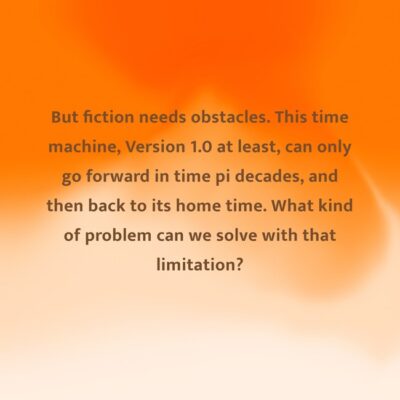
With Josh, my quest for main characters was mostly complete. After a bit more work searching for characters, I was about ready to tell the story of Meg and Josh being forced together and having to avert a global disaster in the making, one which would turn the oceans into a Jell-O-like substance and kill all life on Earth.
By the time that adventure was complete, I had grown to really like these characters and the time machine enough to want to do more. I decided on two additional Meg and Josh stand-alone novellas that also tie the whole story into a trilogy that stands the typical order on its head. Book two shows Meg and Josh working together after they have successfully saved the world. This time around, they try to save one person, Meg’s dad, who died in book one. To do that they have to follow Dad’s messy notes and upgrade the tiny time machine so they can visit the past.
The final volume in the trilogy will have Meg and Josh working with her crusty father to find a way to go even deeper back in time and save her mother. And to deal with a character who was a threat in the first two books, a guy who knows about the device and wants it for himself.
About the Book:
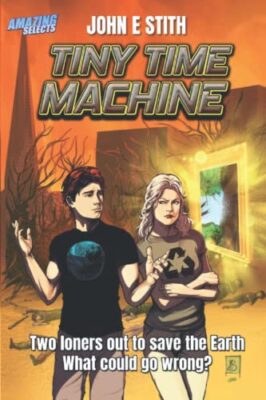 ★★★★★ “A new high-concept idea for time travel!” – Reader review
★★★★★ “A new high-concept idea for time travel!” – Reader review
All life on Earth will die of thirst unless a couple of loners on the run can use a strange time machine to stop a secret project! An action-packed short novel from a Nebula Award nominee.
Meg is an angry scientist’s daughter. Her father is not a mad scientist, just really angry – so angry that he and Meg have rarely spoken since the death of her mother. Meg has become a loner, obsessed with combating polluters like the ones who triggered her mother’s death. And her father has had a different obsession.
When Meg breaks into a paint company to expose their practices, she runs into Josh, another loner out to save the world. When Meg and Josh suddenly find themselves on the run from the cops, Meg heads for the one man who should always take her in–her father.
But when Meg and Josh reach him, they find him dying. Just before he dies, he gives Meg a strange device that looks like a cellphone and tells her to use extreme caution. When the invention proves to be the time machine that holds the key to humanity’s future, Meg and Josh must find a way to do the impossible–to work as a team.
They are up against the cops, a powerful billionaire, a Russian profiteer, and a romantic rival. Can they save the world, and save each other?
About Stith’s prior work:
“Stith writes in the best hard-sf manner, dropping characters into a situation that can be solved only by thought and reason, but he also, more modernly, creates real and believable characters. He is becoming one of the most eloquent modern hard-sf practitioners.” — Booklist
Order your copy and join the quest for humanity’s survival, today!
About the Author: John E. Stith’s most recent novel is PUSHBACK, a finalist for the Daphne Du Maurier Award for Excellence in Mystery/Suspense. When a Colorado Springs resident attends his ten-year high-school reunion, he finds he doesn’t know one person there, and soon realizes an unknown antagonist wants to drive him and his new girlfriend apart.
Much of John’s other work is science fiction, including REDSHIFT RENDEZVOUS, a Nebula Award finalist, and MANHATTAN TRANSFER, now in development for television.
TINY TIME MACHINE was published by Amazing Stories in 2021. (Some of this story-building discussion was included.) TINY TIME MACHINE 2: RETURN OF THE FATHER is due on April 2, 2023.


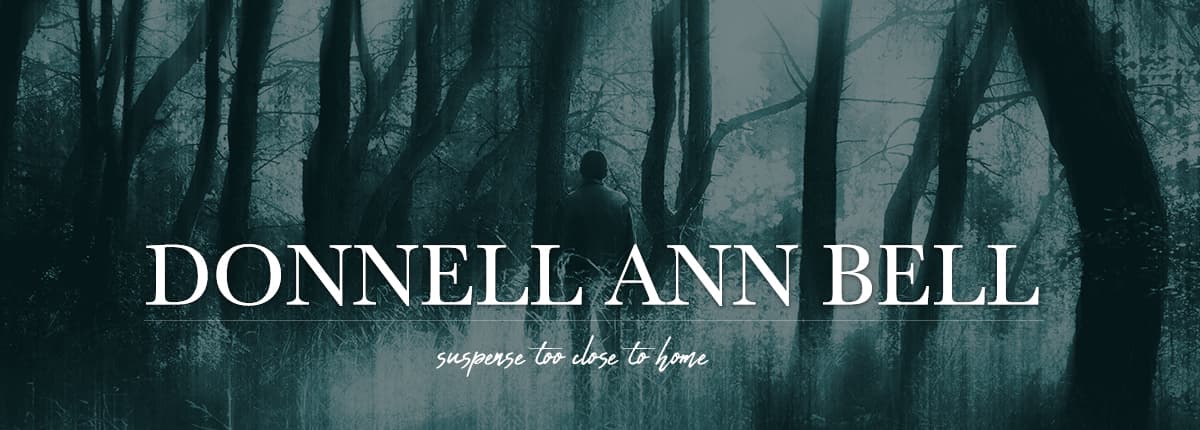
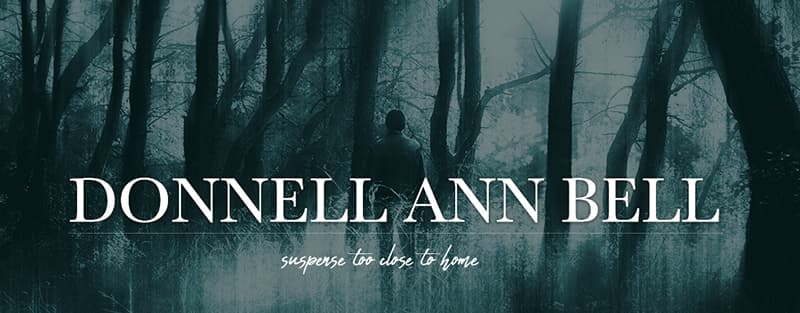







John, this entire article has me intrigued as to your writing and process. I’d never thought of this. Our cars are rolling computers nonw. Leave it to a sci-fi writer to create a time travel machine that needs upgrades! Fascinating look at how Tiny Time Machine was created.